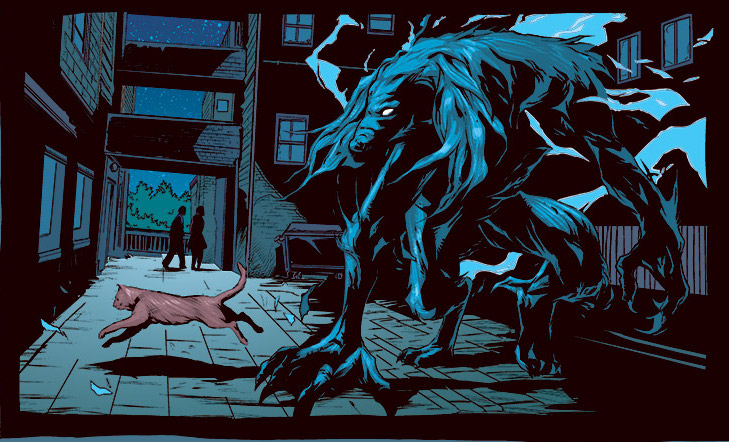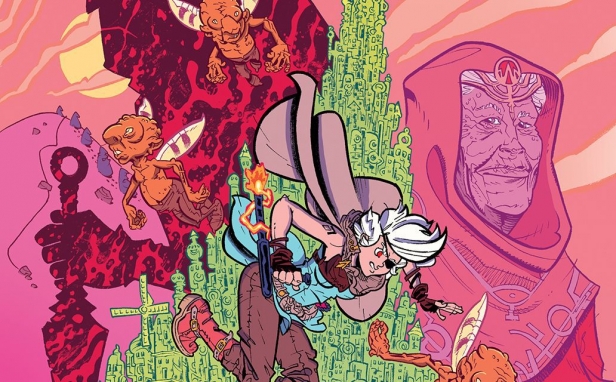How did the inspiration for Cry Havoc come about?
I’ll simply say that those of us who claim to be storytellers are very good at playing down the role of Hard Bloody Work that goes into the damn things. We like to pretend ideas are these angelic bolts of inspiration that leap magically from the aether, striking earth only in the brains of those of us clever, brilliant or (frankly) sexy enough to receive them.
Which: bollocks. Stories don’t descend from the heavens, they accumulate like pearls; layers of shiny oyster-spittle wrapped round a bit of grit. That core-nugget might be anything: a moral aphorism, a stranger on a train, a news story, a confluence of everyday items, an idée fixe which has haunted you for years, a sensory trigger, etc. Pretty much anyone can come up with something worth telling a story about – the trick is to sweat brainblood and time and narrative honey in order to build your arc around it.
With Cry Havoc, I’d been reading up on folklore, and simply started to notice a synchronicity with modern notions of identity and aspiration. The convenience of personified emotion; the abdication of personal culpability onto cultural archetypes; the desire for – yet terror of – metamorphosis, yadda yadda. A pattern in an unexpected place. The other layers – realpolitik, holy war, military machismo, sexuality – gathered like a nebula round a black hole, and coalesced into a story about a scared young woman trying to work out who she really is.
As for genre, that’s something I’ve ranted about many times elsewhere. The short version is that I see the lexicon of terms we use to help categorise stories as being, well, a bit shit. Think about it: ‘western’, ‘horror’, ‘period’, ‘romance’, ‘crime’. That’s one location, one emotional response, one time-reference, one emotional plot-point, and one inciting element. The terms we use to define genres don’t even describe the same sorts of things, let alone tell us anything useful about what truly matters: the story.
Frankly, modern genre terminology benefits only one group of people: administrators. So I’ve stopped giving a hoot. I focus on letting the story bubble and expand and mutate into whatever form it most perfectly needs to be.
To what extent do the artists influence your storytelling?
Cry Havoc is far too layered to be remotely readable without the hand of a master storyteller regulating the pace, disseminating information and creating the illusion of space. Ryan [Kelly] is – and this is not hyperbole – one of the greatest storytellers working in our industry.
For The Spire, Jeff [Stokely]’s volcanic capacity for creativity allowed me to leave blanks in both plot and script. There’s nothing more enchanting than building into one’s own tale the capacity to be surprised. The beauty of collaboration in a nutshell, there. On dozens of occasions, Jeff’s designs and visual solutions caused the story – from a detail level up to the groundwork-shaking thematic stuff – to joyously deviate and redirect.
What influences, if any, lie behind the weird-fi crime mystery fantasy sci-fi that is The Spire?
As ever, a big raging conglomeration of influences. I guess it all started when I found myself getting annoyed at a certain lazy breed of story. A lot of writers go all-out to create a whole new world simply so the stakes of the story can be appropriately world-shaking. They don’t feel like worlds that are functional.
They feel like they only exist for the story’s sake, and the second the tale’s told they cease to be. Which, fine, I get it, people like a bit of the old DEATH! OF! WHOLE! WORLDS! epic stuff, but I’ve got a lot of love for the Blade Runner school of storytelling: create an incredible, vast, maddening, beautiful, horrifying world, then proceed to basically ignore it in favour of a very intimate, human-level story taking place within it. Don’t get bogged down in explaining, because nobody’s ever bothered explaining How The Real World Works either. That’s the sort of story I wanted to tell – with, you know, hovering fart goblins.
Plus, on a more prosaic level, I desperately wanted to work with Jeff again, having had an absolute blast collaborating on Six-Gun Gorilla, so I tried to dream up something I knew he couldn’t possibly refuse. Blade Runner meets Mad Max by way of The Dark Crystal with a pinch of Gormenghast – that’s basically catnip to the wild Stokely.
Cry Havoc is out now, and The Spire collected edition will be available to buy from 20 December. For all the best articles and interviews, pick up the new issue of SciFiNow.
